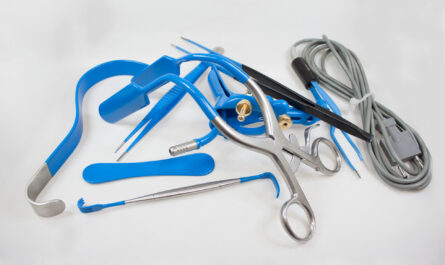What is Complex Regional Pain Syndrome?
Complex Regional Pain Syndrome (CRPS), also known as Reflex Sympathetic Dystrophy Syndrome (RSDS), is a chronic pain condition that usually affects one of the limbs of the body, often a leg or an arm. It develops when the central nervous system amplifies responses from an injury to the body. CRPS causes ongoing severe pain that is out of proportion to any apparent injury and typically spreads or migrates throughout the limb region.
Causes of CRPS
CRPS commonly occurs after an injury, such as a sprain, fracture or surgery, that damages the nerves in an arm or leg. Repeated micro-injuries or trauma to the affected area can also trigger Complex Regional Pain Syndrome. Some common causes include:
– Fractures or broken bones.
– Sprains or torn ligaments.
– Surgery or surgical wounds.
– Injuries from accidents or falls.
– Frostbite or burns.
– Minor bumps, scrapes or cuts.
While the exact cause is unknown, CRPS is thought to develop due to dysfunction in the way the central and peripheral nervous systems process sensory information. There may also be malfunctions in areas of the brain that regulate pain signals being sent. For some people, CRPS can develop without any associated injury or trauma.
Symptoms of CRPS
The three main symptoms of CRPS include:
– Intense pain disproportionate to any inciting event. The pain is typically described as a persistent burning sensation that is much worse than expected for the original injury.
– Changes in skin color or temperature of the affected area. Commonly, the skin is displayed as patches that alternate between shades of blue, red, or pale. Temperature changes may cause the affected area to feel warmer or colder compared to the opposite limb.
– Severe swelling in the affected limb. Swelling in the arm or leg occurs frequently and the skin may feel tight. The swelling fluctuates and migrates away from the original injury site over time.
Additional symptoms may also include: decreased range of motion, changes in sweating patterns, brittle or thinning nails and hair loss in the involved area. Muscle spasms, tremors or involuntary movements may develop as well. Left untreated, Complex Regional Pain Syndrome can seriously impact mobility and quality of life.
Diagnosing CRPS
There is no single test to diagnose CRPS, so diagnosis relies on evaluating symptoms and signs. The diagnostic criteria outlined by the International Association for the Study of Pain includes:
– Continuing pain that is disproportionate to any inciting event.
– Must report at least one symptom from three of the four following categories:
– Sensory: reports of hyperesthesia and/or allodynia.
– Vasomotor: reports of temperature asymmetry and/or skin color changes and/or skin color asymmetry.
– Sudomotor/edema: reports of edema and/or sweating changes and/or sweating asymmetry.
– Motor/trophic: reports of decreased range of motion and/or motor dysfunction (weakness, tremor, dystonia) and/or trophic changes (hair, nail, skin).
– Must display signs at least one sign from two or more of the following categories:
– Sensory: evidence of hyperalgesia (to pinprick) and/or allodynia (to light touch and/or deep somatic pressure and/or joint movement).
– Vasomotor: evidence of temperature asymmetry and/or skin color changes and/or asymmetry.
– Sudomotor/edema: evidence of edema and/or sweating changes and/or sweating asymmetry.
– Motor/trophic: evidence of decreased range of motion and/or motor dysfunction (weakness, tremor, dystonia) and/or trophic changes (hair, nail, skin).
– Must not be better accounted for by another diagnosis.
A thorough exam by a physician familiar with CRPS is important as X-rays and other imaging studies may appear normal. Blood tests are usually normal as well.
Treatment Options for CRPS
Currently there is no cure for CRPS, but early diagnosis and treatment can effectively manage symptoms and potentially prevent progression in some cases. Treatment typically involves a multidisciplinary approach that may incorporate:
– Medications: analgesics, medications to control pain signals, antidepressants and topical agents.
– Physical/Occupational Therapy: gentle range of motion and desensitization exercises. Therapy is aimed at restoring movement and function while avoiding overuse and further injury.
– Nerve Blocks or Ablation: procedures to disrupt pain signals at targeted nerve sites can help control symptoms.
– Psychological Support: cognitive behavioral therapy and pain management strategies help cope with the chronic nature of CRPS.
– Complementary Approaches: some evidence supports low-impact treatments like yoga, acupuncture, hydrotherapy and meditation as useful adjuncts.
– Surgery: in severe cases not responding to other therapies, surgical sympathectomy may provide relief by interrupting pain signals.
Prognosis and Preventing Progression
While CRPS varies greatly in individual cases, early treatment generally correlates with better long-term outcomes and preventing disability. Recognizing signs promptly and seeking medical evaluation can make a profound difference.
Unfortunately, there are currently no reliable ways to predict which injuries may lead to CRPS or fully prevent its development in susceptible individuals. With a multidisciplinary approach and active self-care strategies, many people with CRPS achieve successful management of their symptoms over time.
*Note:
1. Source: Coherent Market Insights, Public sources, Desk research
2. We have leveraged AI tools to mine information and compile it




